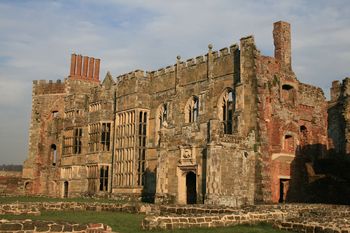Scheduled monument: Difference between revisions
Jump to navigation
Jump to search


imported>Richard Nevell (Created page with "{{subpages}} Under British law a '''scheduled monument''' is an archaeological site protected from unauthorised change. The schedule of monuments is a list of pr...") |
mNo edit summary |
||
| (2 intermediate revisions by one other user not shown) | |||
| Line 1: | Line 1: | ||
{{subpages}} | {{subpages}} | ||
Under British law a '''scheduled monument''' is an [[archaeology|archaeological]] site protected from unauthorised change. The schedule of monuments is a list of protected archaeological sites in [[England]], [[Scotland]], and [[Wales]].<ref>[http://www.english-heritage.org.uk/caring/listing/scheduled-monuments/ Scheduled monuments]", English Heritage, accessed 21 February 2013.</ref> The Ancient Monuments and Archaeological Areas Act 1979 ensured legal protection for scheduled monuments, however sites in Northern Ireland]] are not included.<ref>"[http://www.legislation.gov.uk/ukpga/1979/46 Ancient Monuments and Archaeological Areas Act 1979]", legislation.gov.uk, accessed 21 February 2013.</ref> Nearly 20,000 sites are scheduled; however, this is a small proportion of all the archaeological sites in England, Scotland, and Wales as in England alone there are around a million sites or find spots. Only sites which are considered nationally important are scheduled.<ref>"[http://www.english-heritage.org.uk/caring/listing/scheduled-monuments/what-can-be-scheduled/ What can be scheduled?]", English Heritage, accessed 21 February 2013.</ref> | {{Image|Cowdray House east range.jpg|350px|right|The remains of [[Cowdray House]] in England are protected as a scheduled monument.}} | ||
Under British law a '''scheduled monument''' is an [[archaeology|archaeological]] site protected from unauthorised change. The schedule of monuments is a list of protected archaeological sites in [[England]], [[Scotland]], and [[Wales]].<ref>[http://www.english-heritage.org.uk/caring/listing/scheduled-monuments/ Scheduled monuments]", English Heritage, accessed 21 February 2013.</ref> The Ancient Monuments and Archaeological Areas Act 1979 ensured legal protection for scheduled monuments, however sites in [[Northern Ireland]] are not included.<ref>"[http://www.legislation.gov.uk/ukpga/1979/46 Ancient Monuments and Archaeological Areas Act 1979]", legislation.gov.uk, accessed 21 February 2013.</ref> Nearly 20,000 sites are scheduled; however, this is a small proportion of all the archaeological sites in England, Scotland, and Wales as in England alone there are around a million sites or find spots. Only sites which are considered nationally important are scheduled.<ref>"[http://www.english-heritage.org.uk/caring/listing/scheduled-monuments/what-can-be-scheduled/ What can be scheduled?]", English Heritage, accessed 21 February 2013.</ref> | |||
==References== | ==References== | ||
{{reflist}} | {{reflist}}[[Category:Suggestion Bot Tag]] | ||
Latest revision as of 16:00, 15 October 2024

(CC [1]) Photo: Ivanka Majic
The remains of Cowdray House in England are protected as a scheduled monument.
The remains of Cowdray House in England are protected as a scheduled monument.
Under British law a scheduled monument is an archaeological site protected from unauthorised change. The schedule of monuments is a list of protected archaeological sites in England, Scotland, and Wales.[1] The Ancient Monuments and Archaeological Areas Act 1979 ensured legal protection for scheduled monuments, however sites in Northern Ireland are not included.[2] Nearly 20,000 sites are scheduled; however, this is a small proportion of all the archaeological sites in England, Scotland, and Wales as in England alone there are around a million sites or find spots. Only sites which are considered nationally important are scheduled.[3]
References
- ↑ Scheduled monuments", English Heritage, accessed 21 February 2013.
- ↑ "Ancient Monuments and Archaeological Areas Act 1979", legislation.gov.uk, accessed 21 February 2013.
- ↑ "What can be scheduled?", English Heritage, accessed 21 February 2013.